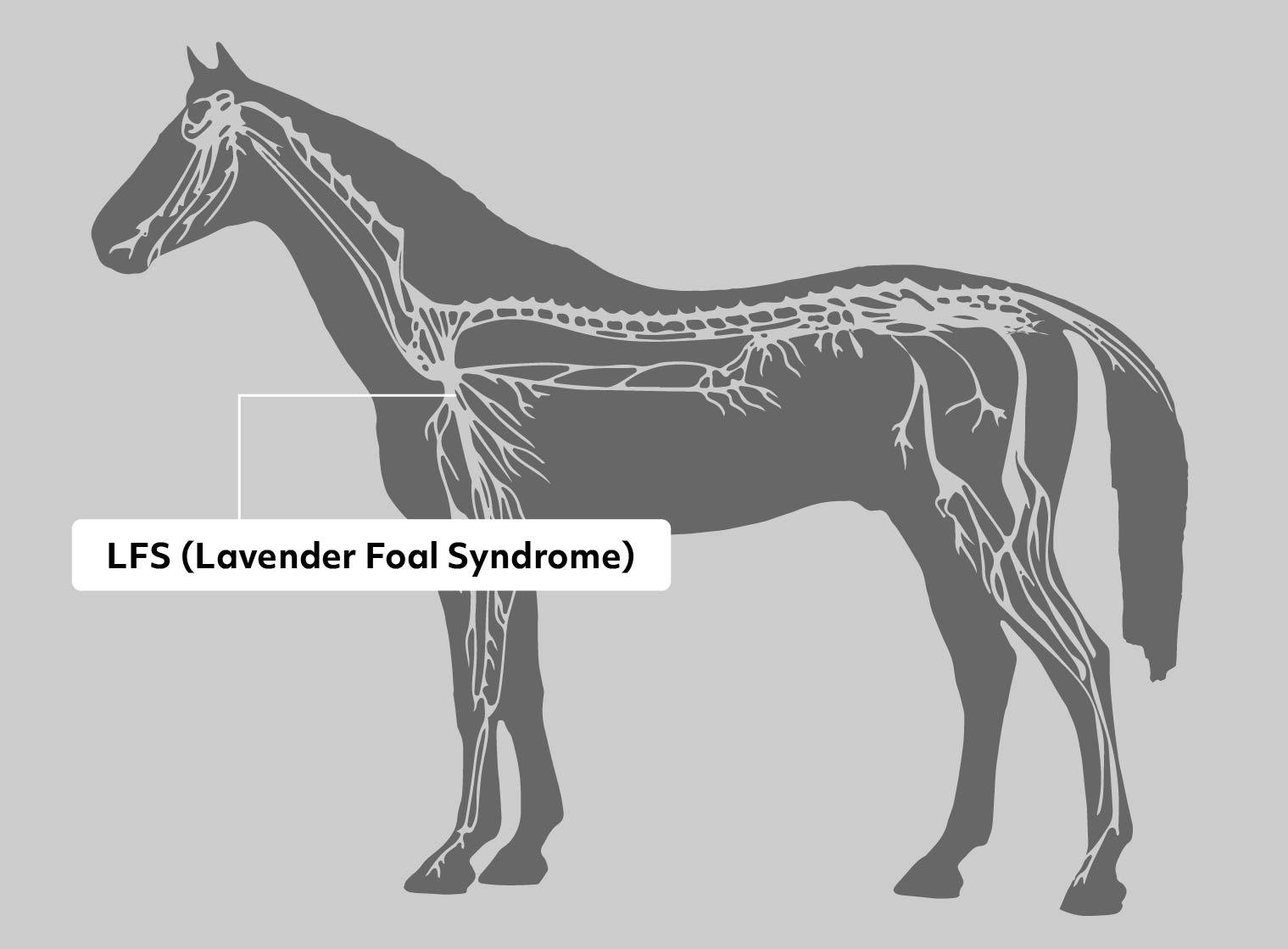Lavender Foal Syndrome (LFS)
Gene or Region: MYO5A
Reference Variant: C
Mutant Variant: -
Affected Breeds: Arabian
Research Confidence: High confidence - Findings reproduced multiple studies
Explanation of Results: lfs/lfs = homozygous for Lavender Foal Syndrome, lethal lfs/n = heterozygous for Lavender Foal Syndrome, carrier n/n = no variant detected
General Description for Lavender Foal Syndrome
Lavender Foal Syndrome (LFS), also known as coat color dilution lethal, is a neurological dysfunction in newborn foals. Symptoms are apparent at birth and include seizures, severe hyper-extension of limbs, neck and back, stiff paddling leg movements, involuntary eye movement and inability to stand or sit upright. The coat usually has a dilute color that ranges in shade from silver to a pale lavender/pink. As there is no treatment, affected foals are humanely euthanized. LFS is an autosomal recessive condition, thus a horse must inherit two copies of the allele (LFS/LFS) to show any signs. Horses with only one copy of the allele (LFS/n) are known as carriers due to their ability to produce affected foals.
Gene Information
MYO5A functions as part of a trafficking complex that serves to move important molecules in pigment cells and neurons. Mutations in humans result in Griscelli syndrome, which is characterized by dilute hair and neurological dysfunction. The LFS mutation is a single base deletion that results in a premature stop codon, and thus a truncated protein.
References
Brooks SA et al., “Whole-genome SNP association in the horse: identification of a deletion in myosin Va responsible for Lavender Foal Syndrome.” (2010) PLoS Genet. 6: e1000909. PMID: 20419149
Gabreski NA et al., “Investigation of allele frequencies for Lavender foal syndrome in the horse.” (2012) Anim Genet. 43: 650. PMID: 22497275
Tarr CJ et al., “The carrier prevalence of severe combined immunodeficiency, lavender foal syndrome and cerebellar abiotrophy in Arabian horses in South Africa.” (2014) Equine Vet J. 46: 512-4. PMID: 24033554
More Horse Health
Congenital Stationary Night Blindness 2
Congenital Stationary Night Blindness (CSNB) is an inherited disorder in horses characterized by an inability to see in low-light or dark conditions. This condition is present from birth and does not worsen over time. Common indicators include a horse’s reluctance to enter dark environments, difficulties in locating food and water in the dark, and a propensity for nighttime injuries.
Equine Arteritis Virus Resistance
Equine Arteritis Virus Resistance (EAVR) is an infectious disease with a broad range of symptoms, though most horses will not display any overt signs. Infection can result in abortion in pregnant mares, and some stallions persistently shed the virus through their semen.
